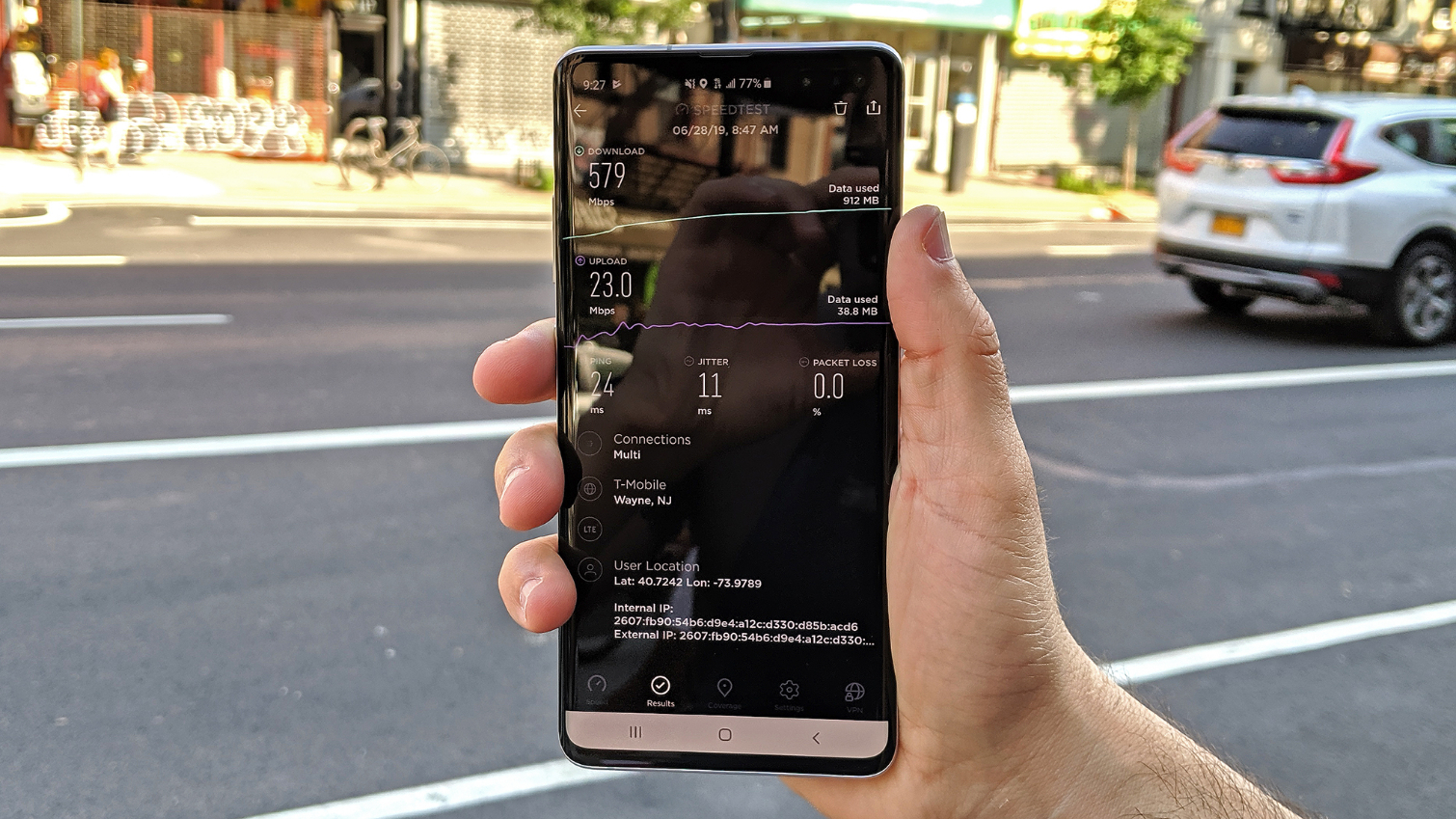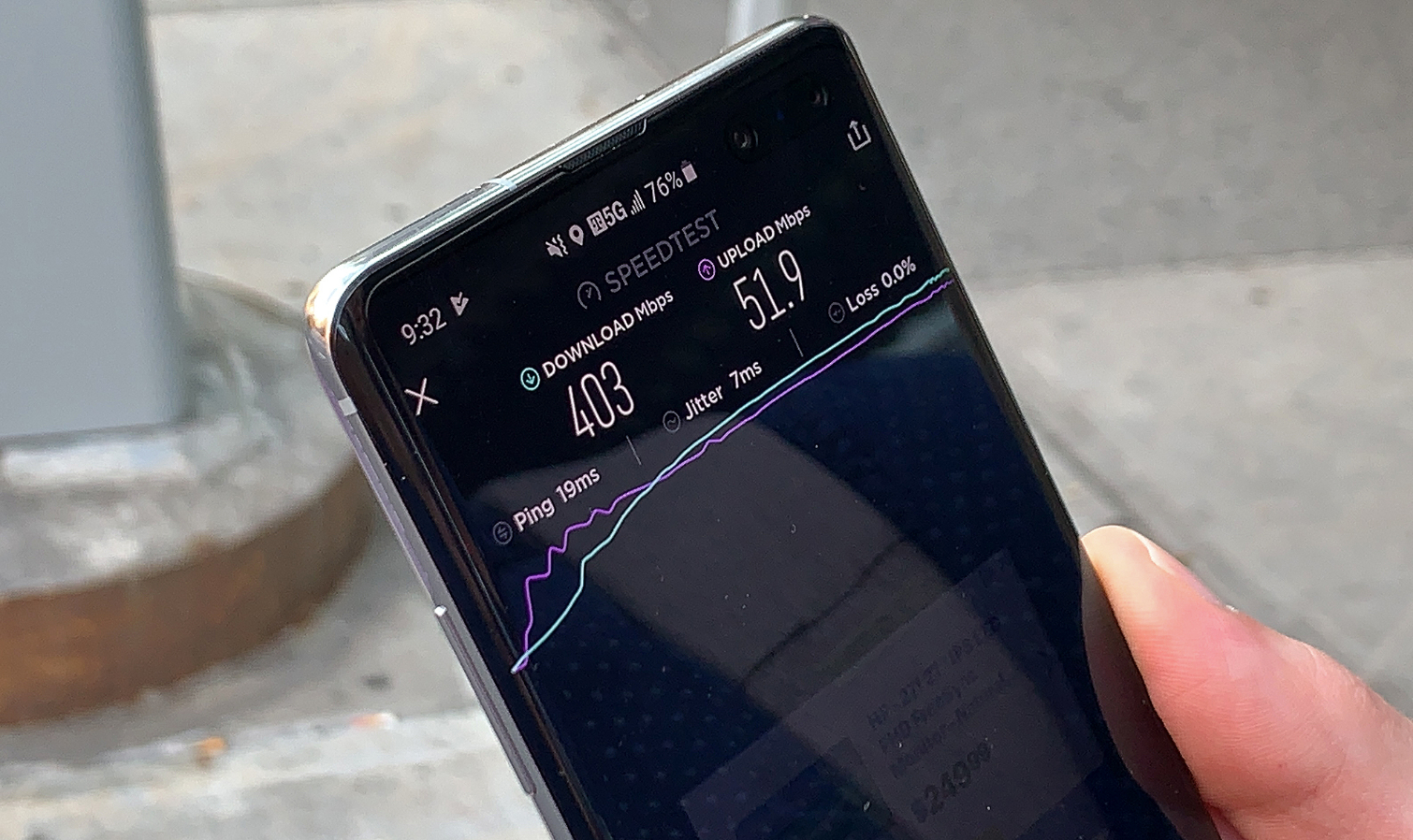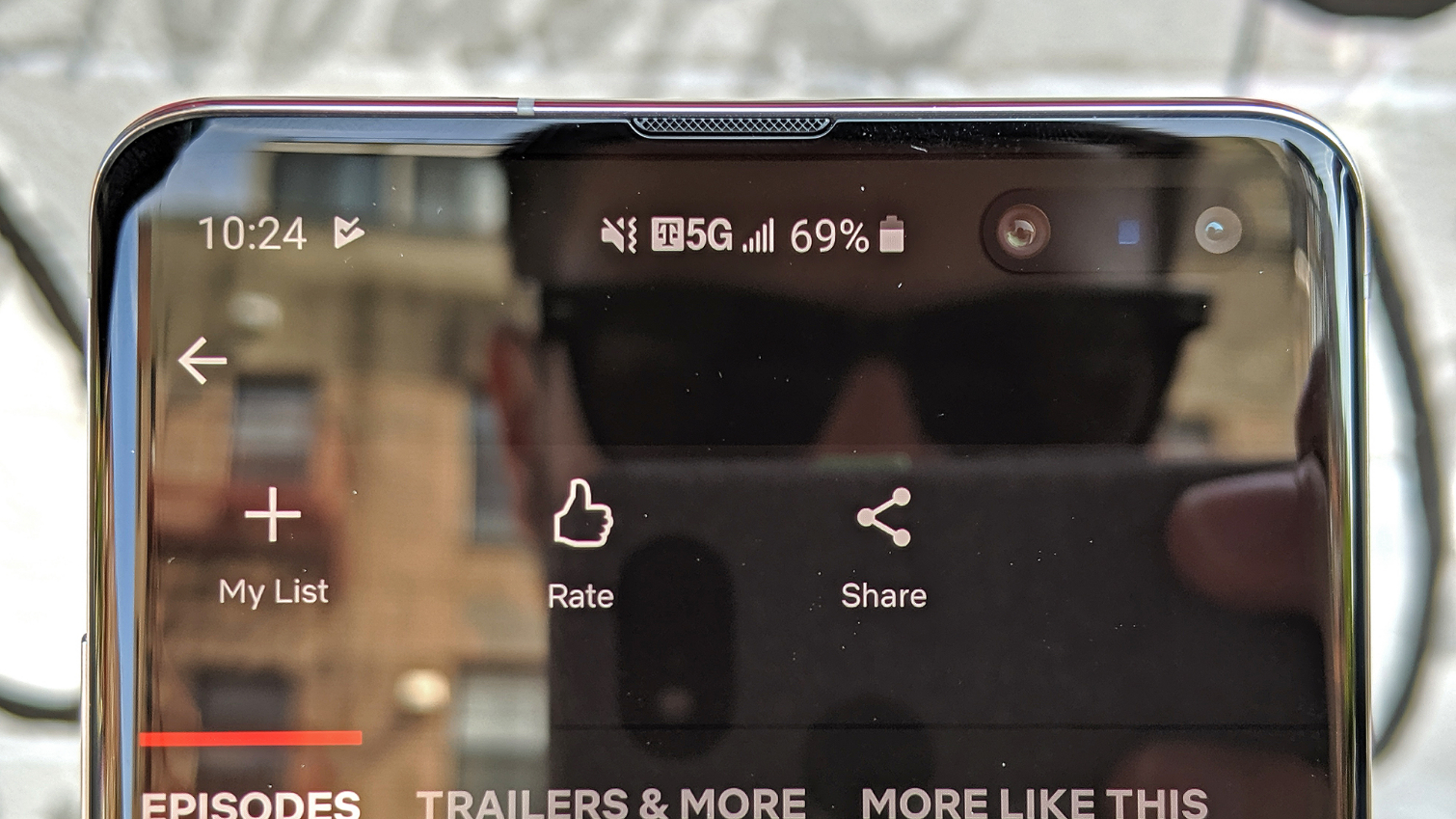T-Mobile's 5G Is the Best Yet — and It's Still Not Ready
T-Mobile's network may not yet be the fastest, but it is the most accessible. And that's what really matters.
I must admit, the process of testing T-Mobile's brand-new 5G network in New York City didn't go anything like I expected it to.

Last time I did this, it was to check out Verizon's 5G network in Chicago, using the very same phone as today — a Samsung Galaxy S10 5G. Verizon made sure every journalist knew exactly which of the Windy City's intersections were equipped with 5G nodes, roughly how far away we should stand from them (close, but not too close) and what to do to make sure the device would connect to 5G is readily as possible (stream Spotify in the background, so the radio is always doing something).
This was roughly how I imagined my experience in Manhattan's Lower East Side would go — right up until a T-Mobile representative handed me a map of the carrier's 5G coverage zone and sent my colleague Mark Spoonauer and I on our way to do our T-Mobile 5G speed test.
In typical T-Mobile fashion, all the streets on this map where 5G service should be available were colored in magenta. And I could not believe how much of New York City was painted in magenta. Sure, the Uncarrier highlighted a few choice locations in the neighborhood where small cells were inconspicuously installed, but we weren't necessarily obliged to go to them.
When I was in Chicago, I would walk arrive at a spot I was told Verizon's 5G would be, and then I would look for an icon confirming as much on the phone's screen. Today, I noticed my handset picking up T-Mobile's 5G on the way to the relevant location. And that changes everything.
A network you can actually use
At the moment, T-Mobile's 5G network is only in its millimeter-wave (mmWave) deployment. That means that to pick it up, you still have to be within line of sight of a 5G node. But what we found in our experience with T-Mobile's nascent infrastructure in Manhattan is that those coverage hot zones are broader.
I'd be half a block away from a cluster of cells, pointed in the wrong direction and still picking up speeds that were 10x faster than typical LTE. And that was an unthinkable scenario in Chicago, where I stood about 40 feet away from one of Verizon's nodes with a puzzled look on my face as my S10 5G did everything except connect to it.

Now, the breadth of T-Mobile's still-developing 5G network does come with an important caveat — it's nowhere near as fast as Verizon's mmWave technology. In Chicago, I averaged 672 Mbps on Verizon's network; in New York City, T-Mobile's towers averaged 369 Mbps. In fact, the highest download speed I witnessed while using Big Red's service was a staggering 1.08 Mbps — 500 Mbps more than T-Mobile's best result of the day, recorded on the corner of E 7th Street and Avenue C.
But here's the thing: given the choice between a really, really fast network that requires me to pretty much stand in place to use it, versus one that's half as quick but still much better than LTE and allows me to move around a bit, I'll take the latter every single time. And in more practical, real-world examples divorced from megabits and gigabits, T-Mobile's 5G is still capable enough to let you pull down far more data than would ever have been possible on LTE.
Take, for example, downloading a single episode of a half-hour show (in this case, Nailed It) at standard quality on Netflix. In Chicago, this took 5.6 seconds. In New York, snagging the same episode over T-Mobile's network took 15.6 seconds. Sure, that's three times longer, but it's an eternity less than the 10-and-a-half minutes needed to download an hour-long episode of The Chilling Adventures of Sabrina over Verizon LTE in Chicago.
Promising, not primed
T-Mobile's 5G is fast enough, for now — but with the added convenience of working in many more places. As of today, most of the coverage appears to be centered around the Lower East Side, with more gaps in the network the further north and west you go. Union Square remains a sizable hole in T-Mobile's map, as do splotches of Midtown just below Times Square — so there's certainly still work to be done.
Furthermore, the 5G indicator on the S10 5G might be a tad overeager. There were occasions where it said it was connected to 5G, only to unceremoniously put up numbers that would embarrass LTE networks. Though, I encountered similar issues from time to time in Chicago. And our difficulties maintaining 5G in NYC may have had something to do with the fact that it was a sweltering 85 degrees outside, and Samsung informed us that the S10 5G is designed to drop down to 4G LTE if it notices itself getting a little too toasty from all that downloading.

Despite those issues, though, the lightning pace of 5G deployment means that T-Mobile's network should grow quickly and get much faster at the same time. Just one month after conducting our very first 5G test in the country, using the Moto Z3 and its 5G Mod on Verizon's 5G network in Chicago, we watched that carrier's speeds double in a few weeks' time. Similarly, we expect T-Mobile's deployment to unfold impressively in New York, both in terms of its mmWave footprint, but especially when it begins rolling out its even broader 600 MHz spectrum.
It's for that reason that I would still hold off buying a 5G phone just yet. The Galaxy S10 5G and LG's V50 ThinQ 5G, which are both available now, aren't built to run on every incarnation of 5G that carriers will employ in the future. Purchasing one today is pretty much the opposite of future-proofing yourself, and the networks still aren't widespread enough to justify their $1,000-plus price tags.
That will all change beginning in 2020, when phones equipped with Qualcomm's next-generation X55 modem arrive, bringing support for lower frequency bands and 26 GHz networks that will be especially common outside of North America. Once that happens, and once 5G networks become almost as easy to find as they are blisteringly quick, then carriers will stop racing to be first and start changing people's lives.
Sign up to get the BEST of Tom's Guide direct to your inbox.
Get instant access to breaking news, the hottest reviews, great deals and helpful tips.
Adam Ismail is a staff writer at Jalopnik and previously worked on Tom's Guide covering smartphones, car tech and gaming. His love for all things mobile began with the original Motorola Droid; since then he’s owned a variety of Android and iOS-powered handsets, refusing to stay loyal to one platform. His work has also appeared on Digital Trends and GTPlanet. When he’s not fiddling with the latest devices, he’s at an indie pop show, recording a podcast or playing Sega Dreamcast.
